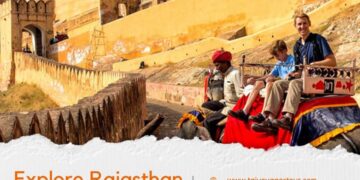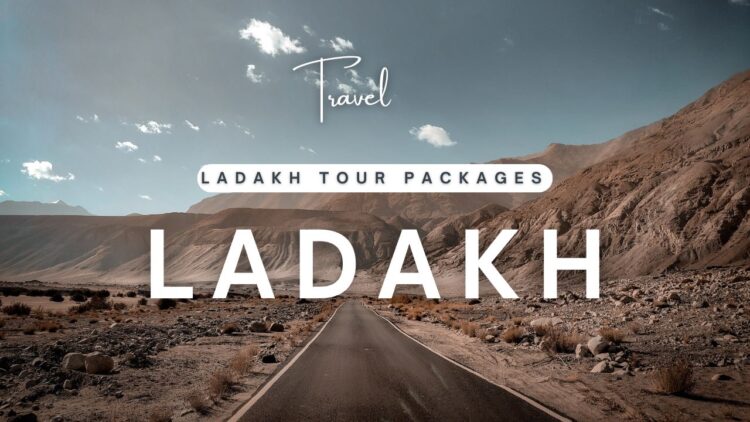Introduction: Why Trekking in Ladakh is a Must-Do
Trekking in Ladakh is not just a travel experience — it’s a journey through high-altitude deserts, ancient monasteries, and snow-capped Himalayan peaks. Located in the northernmost region of India, Ladakh has gained global popularity among trekkers seeking both adventure and solitude. With its dramatic landscapes and unique Tibetan-Buddhist culture, trekking in Ladakh offers a spiritual and physical escape that few other destinations can match.
Whether you’re a seasoned hiker or a first-time explorer, the routes here will leave you awe-inspired. From Markha Valley to Stok Kangri, trekking in Ladakh offers a wide range of options that cater to different difficulty levels and durations.
The Best Time for Trekking in Ladakh
The ideal season for trekking in Ladakh is between June and September, when the weather is stable, the skies are clear, and most of the high-altitude passes are accessible. During this time, daytime temperatures are comfortable, ranging between 15°C and 25°C, while nights remain cold.
Snow-covered routes begin to clear by late May, making early June a perfect start for treks. July and August see a vibrant burst of life in Ladakh’s stark desert landscape, with wildflowers blooming and locals engaging in cultural festivities.
Avoid winter months (October to May) as heavy snowfall cuts off routes and makes trekking in Ladakh dangerous and inaccessible.
Top 5 Routes for Trekking in Ladakh
1. Markha Valley Trek
One of the most popular routes for trekking in Ladakh, the Markha Valley Trek combines dramatic landscapes with rich culture. You’ll pass through remote villages, Buddhist monasteries, and high-altitude pastures.
- Duration: 6-8 days
- Altitude: 5,150 meters (Kongmaru La Pass)
- Difficulty: Moderate
- Highlights: Homestays, Hemis Monastery, river crossings, snow peaks
2. Chadar Trek (Frozen River Trek)
For those craving extreme adventure, the Chadar Trek is a unique experience. It takes place in deep winter (January to February), where trekkers walk over the frozen Zanskar River.
- Duration: 7-9 days
- Altitude: 3,390 meters
- Difficulty: Difficult
- Highlights: Ice caves, frozen waterfalls, interaction with Zanskari locals
3. Stok Kangri Trek
Although recently restricted for environmental reasons, Stok Kangri was one of the most challenging treks. It involved a climb to the summit of Stok Kangri Peak, once the highest trekkable summit in India.
- Duration: 9-12 days
- Altitude: 6,153 meters
- Difficulty: Challenging
- Highlights: Glaciers, panoramic summit view, technical climb
4. Sham Valley Trek
Ideal for beginners or those short on time, Sham Valley Trek (also known as the “Baby Trek”) is a low-altitude route that offers a glimpse into Ladakhi culture and landscapes.
- Duration: 3-5 days
- Altitude: 3,874 meters
- Difficulty: Easy
- Highlights: Likir and Alchi monasteries, local hospitality
5. Lamayuru to Darcha Trek
This route connects Ladakh to Himachal Pradesh and crosses multiple high mountain passes. It’s one of the most extended and diverse trails for trekking in Ladakh.
- Duration: 18-20 days
- Altitude: 5,100+ meters
- Difficulty: Very difficult
- Highlights: Remote landscapes, ancient Buddhist culture, river gorges
What to Pack for Trekking in Ladakh
Due to the harsh weather and high altitude, packing smart is essential for trekking in Ladakh. Here’s a checklist:
Clothing:
- Thermal base layers
- Fleece jackets
- Down jacket
- Waterproof outer shell
- Trekking pants
- Woolen socks, gloves, and hats
Gear:
- Quality trekking shoes
- Sleeping bag (rated for -10°C or lower)
- Walking poles
- Headlamp with extra batteries
- Sunglasses with UV protection
- Water bottles or hydration packs
Essentials:
- Sunscreen (SPF 50+)
- Lip balm
- Basic first aid kit
- Personal medication
- Energy bars and dry fruits
- ID proof and permits
Remember, when preparing for trekking in Ladakh, it’s best to pack light but thoroughly to balance mobility with preparedness.
Physical Fitness and Altitude Acclimatization
Trekking in Ladakh takes place at altitudes ranging from 3,000 to over 6,000 meters. At these heights, oxygen levels are lower, making acclimatization crucial to avoid altitude sickness.
Tips:
- Spend at least 2 days in Leh (3,500m) before starting any trek.
- Stay hydrated and avoid alcohol during the initial days.
- Walk slowly and avoid overexertion.
- Climb high, sleep low — gain altitude gradually.
Even physically fit people can suffer from altitude sickness. Being cautious and listening to your body is key.
Local Culture and Responsible Travel
Trekking in Ladakh is more than just a physical challenge — it’s also a cultural immersion. The people of Ladakh are warm, humble, and deeply rooted in Buddhist traditions.
When trekking through villages, always:
- Ask permission before photographing locals.
- Avoid entering religious places with shoes.
- Use local homestays or eco-lodges.
- Carry all waste back or dispose of it responsibly.
Supporting the local economy by hiring Ladakhi guides, porters, and cooks contributes positively to the region.
Environmental Challenges and Sustainable Trekking
Due to its fragile ecosystem, Ladakh is vulnerable to climate change and tourism-related damage. Sustainable practices during trekking in Ladakh are essential.
Do’s and Don’ts:
- Do carry reusable water bottles and purification tablets.
- Don’t leave plastic waste or burn wood for campfires.
- Do stick to designated trails to avoid damaging vegetation.
- Don’t pick wildflowers or disturb wildlife.
Many trekking companies now offer eco-treks that focus on conservation and minimal-impact camping. Choosing such services supports the preservation of Ladakh’s beauty.
How to Reach Ladakh
You can reach Ladakh by air or road, with Leh being the primary gateway.
By Air:
- Leh Airport (Kushok Bakula Rimpochee Airport) connects with major cities like Delhi, Mumbai, and Srinagar.
- Flights are daily during peak season (June to September).
By Road:
- Manali-Leh Highway (open June to October)
- Srinagar-Leh Highway (open May to October)
Road trips are adventurous but require good health due to rapid altitude gain. For trekking in Ladakh, flying into Leh and then starting treks after acclimatization is most convenient.
Permits and Guidelines
Some regions in Ladakh, especially near the borders, require special permits for trekking.
Common Permits:
- Inner Line Permit (ILP) for Indian nationals
- Protected Area Permit (PAP) for foreigners
You can apply for these permits in Leh DC Office or online via the Ladakh Tourism Department.
Always carry:
- 4-5 passport-sized photographs
- A valid photo ID (Aadhar, passport, etc.)
- Trekking itinerary with details of routes and dates
Cost of Trekking in Ladakh
The cost of trekking in Ladakh depends on the route, duration, and whether you opt for guided or self-supported trekking.
Average Cost Breakdown:
- Budget trek (group): ₹15,000–₹25,000 for 5–7 days
- Mid-range trek: ₹25,000–₹45,000
- Premium trek (private): ₹50,000 and above
- Rentals (gear): ₹300–₹500 per item/day
- Permit fees: ₹500–₹800 (approx.)
Hiring local guides is recommended for safety, navigation, and cultural insights, especially on longer or remote routes.
Conclusion: Make Trekking in Ladakh Your Next Adventure
Trekking in Ladakh isn’t just about reaching mountain passes or crossing rivers — it’s about discovering yourself in the vast, serene spaces of the Himalayas. With trails ranging from beginner-friendly to extremely challenging, it welcomes every trekker to experience its timeless charm.
As tourism grows in this remote corner of India, it becomes even more important to travel responsibly. By respecting local traditions, minimizing environmental impact, and supporting community-based tourism, every trekker can contribute to preserving the magic of trekking in Ladakh.
So lace up your boots, breathe in the crisp mountain air, and let the rugged beauty of Ladakh guide you to an adventure you’ll never forget.




















